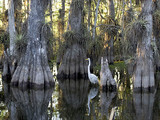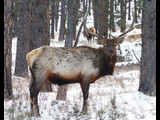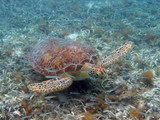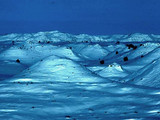Government Grants
Business Grants
Home Owner Programs
Federal Programs
About Us
Pre-WNS Species Distribution and Hibernacula Surveys
Capitol Reef National Park in southern Utah has a high level of bat biodiversity (16 confirmed species).
However little information exists on the distribution and status of bat species within the park, as well as how the park's diverse topography and elevational gradient influences bat community dynamics.
Additionally, potential hibernacula exist within the park, however no recent use/occupancy surveys have occurred.
Therefore, the goal of the project is to collect baseline data on the distribution, and seasonal habitat occupancy and activity patterns of bats within Capitol Reef using passive acoustic surveys with methods that are well-established and proven to be effective.
The project will provide critical baseline data prior to the potential arrival of White-nose Syndrome (WNS), a fungal disease that has devastated bat populations in the eastern U. S. B.
Project Objectives â¿¿ To accomplish the Project Goals, ultrasonic acoustic surveys will be conducted using well-established and approved methodologies.
Specific project objectives are to:
1) understand species distribution along an elevational gradient throughout the year to determine normal seasonal activity patterns of different species in a variety of habitat types; 2) conduct seasonal passive acoustic surveys at entrances of potential hibernacula to determine if bats are using sites to roost and what time of year they are using these roosts; and 3) use the baseline data obtained from Objective 1 and 2 to design a long-term acoustics monitoring program within the park consistent with the North American Bat Monitoring Program and U. S. Fish and Wildlife Service monitoring requirements and protocols.
This project will inform long-term monitoring, as well as fill data gaps on bat ecology and seasonal distribution within the park and southern Utah needed to protect important bat species.
Such baseline data is critical to be able to evaluate the impacts of WNS on bat populations should it arrive in Capitol Reef.
An ancillary benefit of the project is to provide information to the parkâ¿¿s interpretive staff on the spatial and seasonal distribution of bats in the park, as well as use of different habitat types.
The staff will then be able to use the information in education outreach efforts to visitors or to students at public schools.
However little information exists on the distribution and status of bat species within the park, as well as how the park's diverse topography and elevational gradient influences bat community dynamics.
Additionally, potential hibernacula exist within the park, however no recent use/occupancy surveys have occurred.
Therefore, the goal of the project is to collect baseline data on the distribution, and seasonal habitat occupancy and activity patterns of bats within Capitol Reef using passive acoustic surveys with methods that are well-established and proven to be effective.
The project will provide critical baseline data prior to the potential arrival of White-nose Syndrome (WNS), a fungal disease that has devastated bat populations in the eastern U. S. B.
Project Objectives â¿¿ To accomplish the Project Goals, ultrasonic acoustic surveys will be conducted using well-established and approved methodologies.
Specific project objectives are to:
1) understand species distribution along an elevational gradient throughout the year to determine normal seasonal activity patterns of different species in a variety of habitat types; 2) conduct seasonal passive acoustic surveys at entrances of potential hibernacula to determine if bats are using sites to roost and what time of year they are using these roosts; and 3) use the baseline data obtained from Objective 1 and 2 to design a long-term acoustics monitoring program within the park consistent with the North American Bat Monitoring Program and U. S. Fish and Wildlife Service monitoring requirements and protocols.
This project will inform long-term monitoring, as well as fill data gaps on bat ecology and seasonal distribution within the park and southern Utah needed to protect important bat species.
Such baseline data is critical to be able to evaluate the impacts of WNS on bat populations should it arrive in Capitol Reef.
An ancillary benefit of the project is to provide information to the parkâ¿¿s interpretive staff on the spatial and seasonal distribution of bats in the park, as well as use of different habitat types.
The staff will then be able to use the information in education outreach efforts to visitors or to students at public schools.
Related Programs
Cooperative Research and Training Programs Resources of the National Park System
Department of the InteriorObtain Full Opportunity Text:
http://www.grants.gov
Additional Information of Eligibility:
Foreign institutions are eligible to apply.
Eligible agencies of the Federal Government can apply.
Faith-based or community-based organizations can apply.
Any individual with the skills, knowledge, and resources necessary to carry out the proposed research as the Project Director/Principal Investigator (PD/PI) is invited to work with his/her organization to develop an application for support.
Individuals from underrepresented racial and ethnic groups as well as individuals with disabilities are always encouraged to apply for NIH support.
Applicants may submit more than one application, provided each application is scientifically distinct.
Full Opportunity Web Address:
http://www.grants.gov
Contact:
Agency Email Description:
.
Agency Email:
Date Posted:
2018-06-01
Application Due Date:
Archive Date:
2018-06-15
Social Entrepreneurship
Spotlight
When it Comes to Social Enterprises, Failure is the Best Platform for Innovation

In the world of social enterprises, failure is a cringe-worthy moment nobody wants to talk about. But, social entrepreneurs can benefit from their failures.





